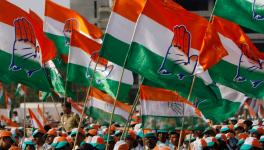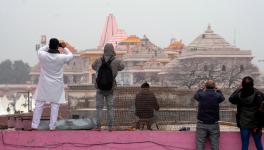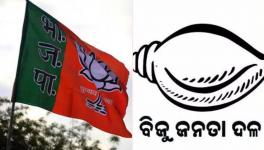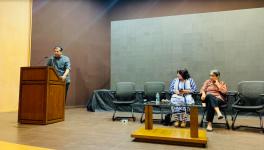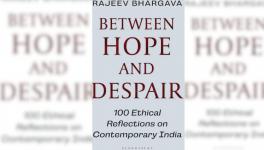A Historical Analysis of Religious Tolerance
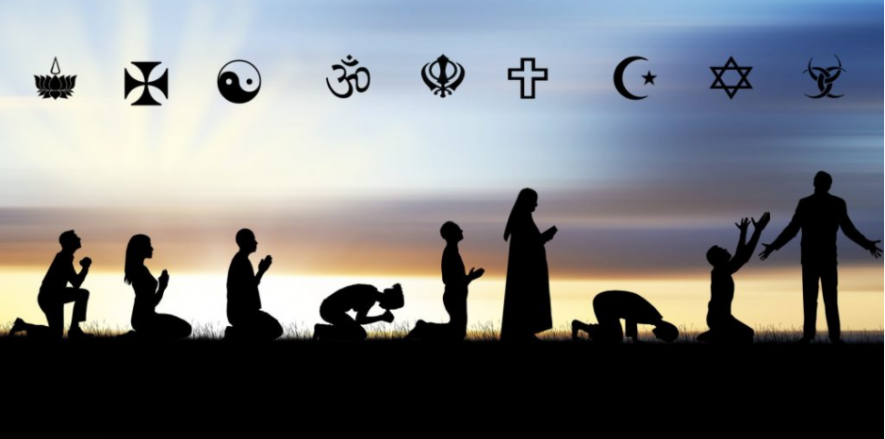
File Image
The rapid rise of neo-fascist politics in India has foregrounded issues relating to the politico-ideological valences of religious traditions and the desirability of secularisation. Does communalism owe its strength only to a specific political structure, or is it also rooted in the tendential exclusivity of popular religiosity? Is the contemporary Right’s vitality to be blamed only on manipulating religious sentiments, or do religious systems also provide normative nourishment to xenophobic zealotry? Is it the failure of progressive religiosity that has elicited religious extremism, or is it the presence of desecularised cultures—in the form of the extended influence and importance of religious institutions, ideologies and identities—that accounts for deeply engrained communal prejudices?
While the first parts of these questions assume that Indian communalism is linked to the misuse of religion and can be neutralised through a more democratic invocation of pre-existing religious resources, the second parts complicate the apparently harmless status of religion, drawing attention to how a modernist emphasis on secularisation can more effectively counter neo-fascist revivalism. Currently, what dominates the Indian political landscape is the critical traditionalism of the former. In the Hinduism vs Hindutva debate, for instance, the main emphasis was on articulating the liberal-democratic arguments within the traditions of the Indian past against the masculinist faith system of the Sangh.
This entire discussion ignored Aijaz Ahmad’s warning about how Indian communalism is not just a form of cultural assertion but a totalising project of national hegemony, which can consequently be countered only through the construction of an alternative national project encompassing all the levels of society:
If communalism for the RSS [Rashtriya Swayamsevak Sangh] is really only the cutting edge for the popularisation of a fascist national project which has come about to challenge and displace the Centre-Left power blocs that had previously contended for hegemony, then it necessarily follows that the posing of secularism against communalism is necessary but insufficient; that the posing of the more humane and subversive traditions within the belief systems of the Indian past against the Sangh’s masculinist and market-friendly Hinduism is necessary but insufficient; and that it is not possible in fact to challenge a fully articulated fascist national project without posing against it a superior national project capable of organising what Gramsci once called the ‘national-popular will’.
One of the major weaknesses of critical traditionalism that prevents it from creating a full-fledged project of national hegemony is its passive reliance on the public significance of religion, as evident in the debate on Hinduism and Hindutva, wherein the political relevance of religion as a spiritual compass remained unquestioned. This stance forces the proponents of critical traditionalism to remain more or less subservient to the institutional complexes associated with the types of religiosities found in India. This three-part article series critically analyses religion in the context of Indian politics to highlight why modernist values, particularly secularisation, serve as more effective responses to communalism than the neo-traditionalist refashioning of religious traditions.
In India, secularism was established as a popular ethic of religious tolerance, with the notion of tolerance itself being consecrated as forming the cultural core of an ancient and stable Indian civilisation. This meant that the necessity of secularisation never arose. Satisfied with the primordially defined concept of an unchanging religious-spiritual-cultural essence, the Indian political class never attempted to initiate changes within a heavily religious civil society, considering secularism to be a state of affairs ready at hand to be used expediently. “In the Indian context,” writes Achin Vanaik, “the overdetermination of the notion of secularisation by the idea of tolerance did mean that the question of the secularisation of civil society was never posed in the same way as in the West. Whether Indian civil society was, could be or needed to be secularised were effectively non-questions since, for most, the tolerance (i.e. secularism) of Indian society was treated as axiomatic, despite the communal horrors of Partition”.
To what extent is this notion of tolerance historically accurate? In the traditional Indian societies, the political authority of the state was marginal, composed of local arrangements of power based on access to land and temple, regional kingdoms and a far-removed grand empire, whose grandiose spatial spread was matched by its superficial penetration into different areas. The third case of power arrangement needs further elaboration.
The reign of the great empires of India—the Mauryas (1st century BC), the Guptas (4th century AD), the Delhi Sultanate (12th-16th centuries AD) and the Mughal Empire (16th-18th centuries AD)—witnessed the existence of smaller units of political authorities that practised diverse forms of vernacular cultures. The imperial centre was always embedded in a wider system of multiple regional structures. This dual arrangement was an outcome of the peculiar characteristics of Indian society: One, in a religiously diverse country, organised political power had no other option than to maintain some distance from the dominant religious group for the sake of stability and peace. Two, the geographical vastness of the areas made it difficult for imperial agents to forcefully impose on them a completely uniform system of political rules and cultural codes.
These concrete imperatives manifested themselves in the theological principles of Hinduism and Islam. In the Manusmriti, we find that “a fundamental distinction between the king as the human agent and the law as the superhuman abstract order leads to a theory of restrained rulership and a conception of fairness of treatment towards different types of subjects”. The realm of kingship has various obligations to and relations with the morally transcendent sphere of spirituality. Since society is the embodiment of spirituality, the social order—consisting of different castes—is said to be prior to the state, with the rulers tasked with protecting socio-cultural customs.
Hindu political theory articulates this subordination of the king’s legislative function to the social order in “the relation between the political ruler and the social practices of the caste order. The ruler’s power is executive or administrative; it cannot make fundamental rules of social conduct or change them. The rules of the caste order as a system of social relations are thus impervious to the constant fluctuations of royal power”. The self-regulating permanence of “deep social life” is to be distinguished from the unstable power dynamics of dynasties, kingdoms and individual rulers, which “affect the lives of a very small number of individuals who are born, by their caste fate, to endure the impermanence and aggravations of a life of political power”.
A similar Islamic political theory of restrained rulership and a legislatively powerless state can be seen in the structure of Mughal rule. Its theological precepts derived from the Persianate Islam of the Khorasan region, which had to deal with the conquest of non-Islamic rulers. Relying upon a specific reading of Aristotle, the Muslim intellectuals of this version of Islam asserted that the ruler’s duty, regardless of his faith, was to ensure the development of conditions that would allow the flourishing of his subjects. The royal authority was to work toward the creation of a society that guaranteed not just mere sustenance but also human development. “Living as human beings—not just zoe [life of biology] but bios [life of language and politics]—required conditions in which subjects could use their intellectual and spiritual capacities. Based on this interesting derivation from Aristotle, they were able to assert that the task of the non-Islamic ruler was to preserve the religious practice of his Islamic subjects”.
Basing themselves on this unique Aristotelian interpretation of Islamic rule, the Mughals practised forms of toleration that incorporated the religious beliefs of the Hindus. In sum, both Hinduism and Islam established a system of political authority that recognised itself as being conditioned by the constraints of society. While recognising this historically specific feature of the pre-colonial state, it is important not to advance the theory of “segmentary state,” according to which the grandiose verbal claims of pre-colonial states only hid the empirical reality of a near-total lack of authority. In the words of Irfan Habib, it “is held that the British conquest was the product of a ‘revolution,’ by which the East India Company merely replaced the titular Indian state as a partner of the local elites, and the British conquest was thus not really a conquest at all!” Here, the question of centralisation is conflated with that of the strength of state power. It is presupposed that a state capable of maintaining sovereignty over its territory has to be centralised in terms of administrative structure and socio-cultural practices. In opposition to this, we need to insist on both the strength of the pre-colonial state and its distance from society—something inconceivable within an analytical perspective mired in European notions of sovereignty. Sudipta Kaviraj articulates this succinctly:
“In terms of their external relations with other kingdoms or empires, these [pre-colonial] states were indeed ‘sovereign’ over their territories; but we cannot simply assume that in their internal relationship with their subjects, these states exercised the familiar rights of sovereignty. It is essential to understand the difference between the actual weakness of a state and its marginality in principle. The relative autonomy of the social constitution from the state did not arise because the state was weak and would have invaded social rules if it could muster the necessary strength. Instead, it accepted a marginality that was a consequence of its normative principles. The marginality of the pre-modern state was a social fact precisely because it followed a moral principle which guided the relationship between rulers and subjects.
The lack of a clear locus of political authority in pre-colonial formations meant that the state could not act decisively on behalf of the society. Instead of actively attempting to implement its favoured political programme, the pre-colonial state had to respect the internal regulations and practices of social groups as long as taxes and revenues were paid. Hence, a segmented societal architecture relied for its sustenance upon the multiple, dispersed and stable rituals of community social life. This is what is meant by ancient pluralism. Unlike the modern culture of individual rights, such pluralism was restricted to the mere fact of coexistence, with the normatively stronger attitudes of inter-religious respect being generally absent.
In the words of Kaviraj: “Coexistence of numerous local communities which would have liked to impose their ways on others had they the power to do it, is not equal to a situation of pluralism-tolerance. It is a pluralism which represents a powerless intolerance.” This model of ineffectual intolerance rather than positive ideological tolerance is evident in the actual workings of the much glorified “composite culture,” in which liberal nationalists give a modernist flavour to the interaction between Hindus and Muslims through a retrospective imputation of secular values to traditions.
According to Kaviraj, the Muslim control of “the upper layers of political authority” and the Hindu control of “commercial, craft and other productive practices” gave rise to “an effective protocol of trans-active relations for the prosecution of everyday business.” These “transactions in mundane matters like commerce and administration” were strictly separated from the domestic space of family, where spiritual exclusiveness remained dominant. Further, “because the mundane is less important than the sacred for pre-modern mentalities,” the public domain of material transactions was considered less important than the private domain of familial spirituality. The “temple and the mosque, the household puja and namaz remained more significant than the market and the court; and these interactions did not result in the creation of a public space under the state’s control”.
Any cultural synthesis in the areas of art, architecture, music and literature was confined to the elite boundaries of the state. Despite the efforts of the Bhakti-Sufi tradition, the message of religious egalitarianism could not percolate into the concrete ethos of Indian social life, becoming ossified into otherworldly quietism. The weakness of syncretic-fusionist traditions flowed from its pre-reflective nature—it was not epistemically organised and consciously claimed by the people belonging to different religio-cultural communities. It functioned as a loose moral code liable to dissolve when extended into spheres of society explicitly concerned with power equations.
Javeed Alam writes that the pre-reflective compositeness of folk traditions “was not aligned with contending orthodoxies in a way as to be taken as necessarily acceptable when consciously thought about. Once the orthodoxy felt the danger and began intervening, by whatever modalities from above, they more or less succeeded…in pushing back or defeating most of these trends”. The spirit of religious equality and universalism propagated by the Bhakti-Sufi tradition was a systematisation and popularisation of the everyday experience of demographic diversity and cultural heterogeneity that formed the core of pre-colonial India. More particularly, it was rooted in the material experience of religiously diverse people coming together for commercial and administrative work. People skilled in these practical activities tended to think in secular terms when dealing with the phenomena and problems of their work. For instance, from the medieval period onwards, government institutions had officials, generals and soldiers belonging to all religions. The Muslim and Hindu rulers (Sher Shah Suri, Akbar, Aurangzeb, Shivaji, Ranjit Singh etc.) freely employed the followers of other religions, specifically in the revenue administration and the army.
These rulers also made efforts to ensure that the execution of public duties by the officials was done within a non-religious framework. Given the emergent materialism of this secular framework, it was in consonance with the spirit of social and scientific development. The Bhakti-Sufi tradition denoted a cultural radicalisation of these secular-scientific experiences, extending the materialist principles in the public sphere of work into the private sphere of religiosity. However, the domain of the private was dominated by Brahmanical ideology. Unlike most common people, the upper castes were divorced from any material labour for their livelihood. The life of Brahmins depended on intellectual exercises that did not have a practical orientation toward materialism. They were the ones who controlled the means of intellectual, aesthetic, and spiritual production, while the rest of society produced material wealth. Thus a division emerged between intellectual and physical labour, between spiritual and temporal life. Driven by cosmic ideas of a distant mental universe rather than phenomena of the socio-material world, the Brahmins developed themselves into idealists—the most powerful example being the philosophical system developed by Adi Shankara.
Insofar as this idealism was backed by the social and political might of upper castes, the developing secular-scientific culture of the working people and its cultural counterpart in the Bhakti-Sufi tradition suffered a defeat. Due to the hegemony of casteism, the working people and the cultural representatives of this class were beholden to the ideological power of Brahmanical idealism. EMS Namboodiripad writes: “It was, therefore, an unequal battle between the toiling people who were inherently materialistic in outlook and those who lorded it over them with their idealistic philosophy.”
The victory of idealist philosophy led to the entrenchment of an anti-scientific outlook that ossified the social structure through a continued dependence upon closed religious abstractions. The predominance of separate religious identities in the private sphere and growing inter-religious interaction in the public sphere meant that pre-modern forms of tolerance represented structures of coexistence in which there were neither any sharp and conflictual religious divisions nor any widely prevalent processes of cultural synthesis. This traditional society was an intersecting network of hierarchies, tolerances and intolerances: some differences were accepted, others were frowned upon, with the elites of religious communities never forgetting to draw lines of demarcations and establish diverse inequalities.
The writer is a student based in Aligarh. The views are personal.
Get the latest reports & analysis with people's perspective on Protests, movements & deep analytical videos, discussions of the current affairs in your Telegram app. Subscribe to NewsClick's Telegram channel & get Real-Time updates on stories, as they get published on our website.










